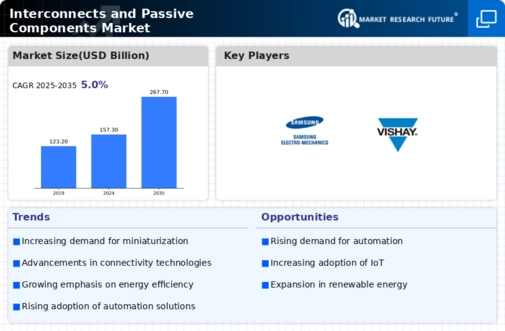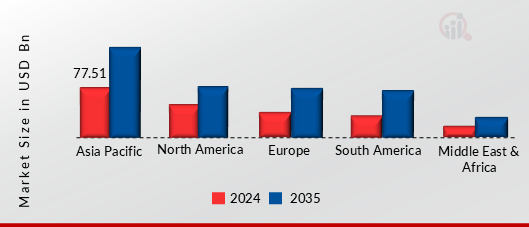Market Trends
Key Emerging Trends in the Interconnects and Passive Components Market
The Interconnects and Passive Components market is experiencing noteworthy trends as technological advancements and evolving industry needs reshape the landscape. One prominent trend is the increasing demand for high-speed data connectivity, driven by the proliferation of data-intensive applications and emerging technologies like 5G. As a result, there is a growing emphasis on the development of interconnects and passive components that can support higher data rates and bandwidth. Manufacturers are investing in research and development to create components capable of meeting the demands of modern communication systems, data centers, and other high-speed applications.
Another significant trend in the market is the miniaturization of components. With the continuous drive towards smaller and more compact electronic devices, there is a corresponding need for interconnects and passive components that can fit into limited space without compromising performance. This trend is particularly evident in the consumer electronics sector, where smartphones, wearables, and other portable devices demand smaller and lighter components. Manufacturers are responding by designing components with reduced form factors, improved energy efficiency, and increased integration to meet the requirements of modern, space-constrained applications.
The market is also witnessing a shift towards the development of eco-friendly and sustainable components. As environmental awareness grows, there is increasing pressure on industries to reduce their carbon footprint and adopt more sustainable practices. In response to this trend, manufacturers in the interconnects and passive components market are exploring materials and manufacturing processes that minimize environmental impact. This includes the use of recyclable materials, energy-efficient production methods, and designs that promote product longevity and recyclability.
Additionally, there is a growing focus on the integration of advanced materials and technologies in interconnects and passive components. With the advent of new materials like advanced polymers, ceramics, and composite materials, manufacturers are exploring ways to enhance the performance and durability of components. These advanced materials offer improved thermal management, higher conductivity, and better mechanical properties, contributing to the overall efficiency and reliability of electronic systems.
Interconnects and passive components are also becoming integral to the development of emerging technologies such as the Internet of Things (IoT) and artificial intelligence (AI). As these technologies continue to proliferate, there is an increasing need for components that can support the connectivity and processing requirements of IoT devices and AI systems. The market is responding by innovating interconnects and passive components that facilitate seamless communication between devices, enable efficient power management, and contribute to the overall functionality of IoT and AI applications.
Moreover, the market is witnessing a trend towards the customization and modularization of components. As industries become more specialized and demand unique solutions, there is a growing preference for interconnects and passive components that can be easily customized to meet specific requirements. Modular designs allow for greater flexibility, enabling manufacturers to adapt components to various applications and configurations efficiently.





Leave a Comment